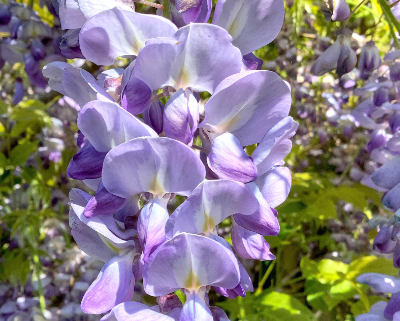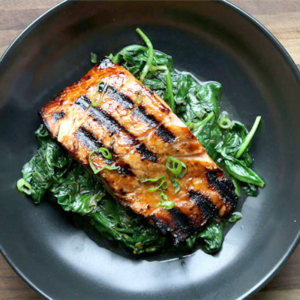Have a crack – grow a snack
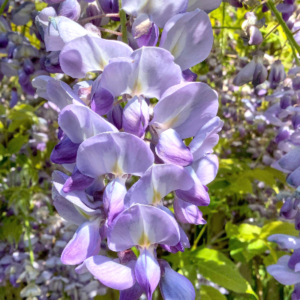 Growing your own vegetables is one of the most rewarding forms of gardening. It combines the joy of working with plants with the satisfaction of producing fresh, nutritious food. October is the perfect month to get started, as it’s when the widest variety of vegetables become ready for planting. There’s something deeply satisfying about seeing seeds and seedlings transform into vibrant, edible plants and the spring sunshine in October provides ideal conditions for growth.
Growing your own vegetables is one of the most rewarding forms of gardening. It combines the joy of working with plants with the satisfaction of producing fresh, nutritious food. October is the perfect month to get started, as it’s when the widest variety of vegetables become ready for planting. There’s something deeply satisfying about seeing seeds and seedlings transform into vibrant, edible plants and the spring sunshine in October provides ideal conditions for growth.
If you’re new to vegetable growing, it’s best to start small. For those who already have experience with ornamental gardens, simply set aside some space alongside your flowers or shrubs. The combination can make your garden both productive and visually appealing. For complete beginners, seedlings in pots filled with good-quality potting mix are a great way to begin your first season. Once you feel more confident and inspired, you can expand into a small garden patch in the ground. Always choose a sunny location and remember the basics: water regularly, feed your plants with suitable fertiliser and keep weeds under control. Easy-to-grow options for first timers include cucumber, tomato and zucchini, all of which are forgiving and can be planted now.
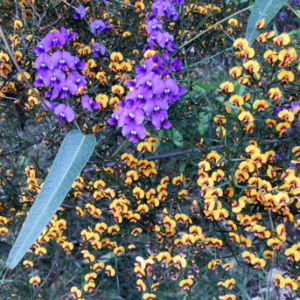 Growing your own vegetables does more than just fill your plate with fresh food. It provides a valuable connection to the natural world, encourages gentle physical activity and can boost mental wellbeing. By growing your own produce, you have full control over the use of chemicals, allowing you to choose more organic approaches if you prefer. Harvesting vegetables at their peak ensures the best flavour and nutritional value and can even reduce your dependence on supermarket produce. If things go well, you may even find yourself with a surplus harvest to share with neighbours and friends or to preserve for later use.
Growing your own vegetables does more than just fill your plate with fresh food. It provides a valuable connection to the natural world, encourages gentle physical activity and can boost mental wellbeing. By growing your own produce, you have full control over the use of chemicals, allowing you to choose more organic approaches if you prefer. Harvesting vegetables at their peak ensures the best flavour and nutritional value and can even reduce your dependence on supermarket produce. If things go well, you may even find yourself with a surplus harvest to share with neighbours and friends or to preserve for later use.
Growing your own also offers the chance to experiment with unusual and colourful varieties not commonly found in stores. Fancy purple carrots, blue potatoes, white strawberries, yellow tomatoes, orange-fleshed watermelons or even green cauliflower? All are achievable for the adventurous gardener, adding variety and excitement to both your garden and your plate.
Meanwhile, the towns’ gardens are alive with spring colour. Perennial flowering shrubs such as lavender, pelargoniums/geraniums and daisies are sparkling everywhere. Azaleas are aflush, while clusters of orange clivea brighten the shadier spots. Wisteria cascades in colourful curtains, and the tall, intensely blue spikes of echium sway above their grey-green foliage. Callistemons are coming into flower as well, much to the delight of the local lorikeets.
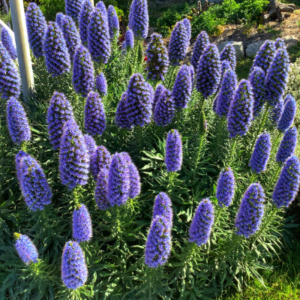 In the wild areas, along roadsides around the Triangle, splashes of purple are appearing as the native climber Hardenbergia violacea produces its mass of small pea-shaped flowers. Combined with the bright yellow and orange blooms of the native ‘eggs and bacon’ bushes (Daviesia spp., Pultenaea spp., and others), the result is a royally striking display of colour.
In the wild areas, along roadsides around the Triangle, splashes of purple are appearing as the native climber Hardenbergia violacea produces its mass of small pea-shaped flowers. Combined with the bright yellow and orange blooms of the native ‘eggs and bacon’ bushes (Daviesia spp., Pultenaea spp., and others), the result is a royally striking display of colour.
This month in the vegetable garden is the one we’ve all been eagerly waiting for. Now is the time to plant your favourite varieties of beans, capsicum and chillies, corn, cucumber, eggplant, melons, pumpkins, tomatoes and zucchini. Continue planting and tending to beetroot, carrot, celery, lettuce, onions, peas, potatoes and silver beet.
If you have any comments, gardening questions or plant or pest identification problems, please send to gardening@thetriangle.org.au and we will get back to you personally.
Happy growing!
Mark Evans
Photos (top to bottom): Wisteria sinensis, Hardenbegia violacea and Daviesia ulicifolia, Echium candicans
